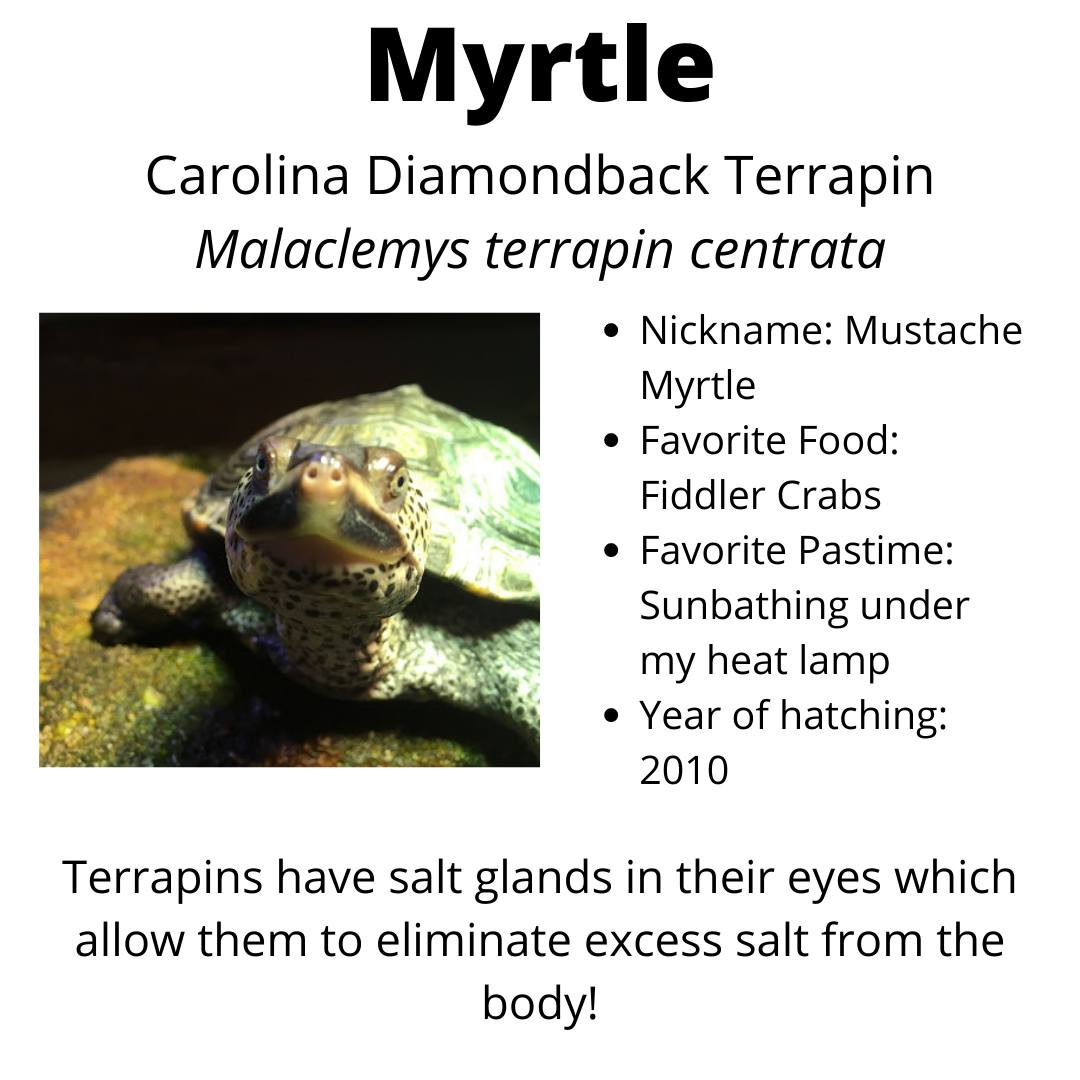- Detailed profile of the Diamondback Terrapin, highlighting its unique characteristics and habitat
- The life and times of Myrtle and Squirtle at Marineland: zoo management and animal welfare
- Conservation efforts for the Diamondback Terrapins and the importance of protected environments
- The educational and visitor experience at Marineland’s Sea to Shore Tour
- The role of such programs in fostering wildlife conservation awareness
Diamondback Terrapins (Malaclemys terrapin) are a species of turtle adapted to life in the brackish waters of coastal marshes and estuaries along the eastern and Gulf coasts of the United States. With a distinguishable diamond pattern on their carapace, these turtles play a pivotal role in their ecosystems. Profiling these fascinating creatures reveals their specific adaptations, diet, behavior, and breeding patterns.
Myrtle and Squirtle, Marineland’s resident Diamondback Terrapins, serve as ambassadors for their species. The care provided to them is critical and reflects the high standards set by modern zoological practices. Zoos and aquariums play a significant role in wildlife education, and through their exemplary management, Myrtle and Squirtle enjoy a habitat that closely mimics their natural environment. Their daily routine includes regulated feeding, health checks, and enrichment activities to promote physical and mental well-being.
The survival of Diamondback Terrapins in the wild faces numerous threats: habitat destruction, pollution, and entrapment in crab traps are just some of the challenges. As a result, conservation efforts become crucial. Protected environments like sanctuaries and national parks provide safe havens for these turtles. Additional initiatives include breeding programs, legislation to minimize bycatch in fishing gear, and public education campaigns to raise awareness about the importance of preserving terrapin habitats.
Marineland offers enriching experiences like the Sea to Shore Tour, allowing visitors to look more closely at terrapin care and conservation. Educational programs that include personal encounters with animals like Myrtle and Squirtle not only entertain but also instill a sense of responsibility towards the environment and wildlife conservation. These experiences aim to inspire action and foster a connection with nature.
Integrating such educational programs within the framework of conservation strategies is vital. It galvanizes public support for wildlife protection endeavors and demonstrates the impact of individual actions on global environmental health. As habitats face increasing threats, fostering this connection becomes critical for the continued survival of species like the Diamondback Terrapin.
Diving deeper into the Diamondback Terrapin’s world reveals creatures finely attuned to the tidal marshes they inhabit. Expert swimmers easily navigate through their salty domain, propelled by webbed feet. These turtles possess glands that allow them to excrete excess salt, an adaptation essential for thriving in salty conditions. Their diverse diet includes fish, snails, crabs, and marsh plants.
Marineland’s care for Myrtle and Squirtle involves replicating their natural diet and ensuring they receive the nutrients necessary for longevity and vitality. A balanced diet is a critical aspect of zoo management, reflecting the institution’s commitment to exemplifying best practices in animal husbandry. Regular veterinary care also plays a fundamental role, as early detection of health issues is crucial in a controlled environment.
Their habitat at Marineland is designed to simulate the dynamic conditions of coastal marshland. With fluctuating water levels and various substrates, Myrtle and Squirtle can engage in natural behaviors such as foraging and basking. The facility’s commitment to environmental constructs in zoo habitats emphasizes the importance of physical and psychological wellness for the resident terrapins.
Conservation initiatives can take many forms. For the Diamondback Terrapin, a primary concern is the preservation and restoration of coastal estuaries, which are essential for their life cycle. Community involvement programs encourage locals to monitor terrapin populations and habitats while researchers gather data to guide effective management plans. Citizen science projects empower individuals to contribute to conservation efforts, notably impacting the species’ future.
Marineland’s Sea to Shore Tour showcases the behind-the-scenes care of creatures like Myrtle and Squirtle. This initiative provides insight into the challenges of zoo management in a world where the balance between human activity and wildlife conservation increasingly requires careful attention. Visitors learn about individual animals through these tours and gain perspective on broader ecological issues.
The role of such programs extends beyond mere exposure to wildlife; they catalyze public engagement in environmental stewardship. By experiencing wildlife up close, visitors often develop a deeper appreciation and a greater inclination to support conservation programs. Zoos and aquariums are thus positioned as vital conduits for knowledge dissemination and as advocates for the natural world.
In summary, the journey from understanding the distinct biological traits of the Diamondback Terrapin to appreciating the intricacies of zoo management and the cruciality of habitat conservation casts light on the interconnectedness of all efforts aimed at wildlife protection. Myrtle and Squirtle are not just exhibits; they represent their species in a world where education and conservation coalesce. Marineland’s dedication to care, conservation, and education provides a blueprint for how humans can symbiotically coexist with nature, preserving the diversity of life for future generations. The Sea to Shore Tour is more than a visitor attraction; it embodies the essence of conservation education, shaping the perceptions and actions of those crucial to the future of species like the Diamondback Terrapin.
*****
Source Description
.
We’re continuing our countdown to with a focus on Myrtle and Squirtle, our Diamondback Terrapins.
A terrapin is a fresh or brackish water turtle, making it geographically distinct from sea turtles. You can meet Myrtle and Squirtle by joining us on a Sea to Shore Tour during your next visit to Marineland.


